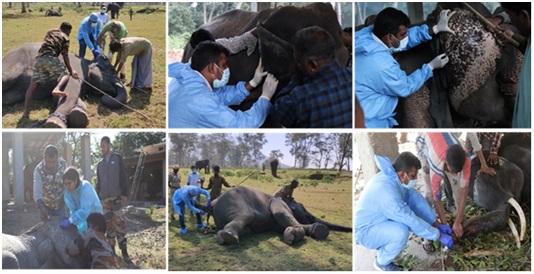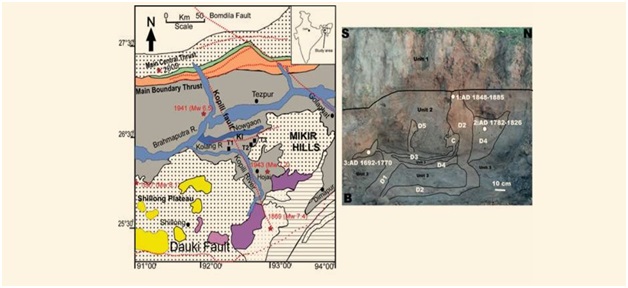Elephant Endotheliotropic Herpesvirus (EEHV) (DST Gov)

- 06 Dec 2023
Why is it in the News?
The study by ICAR-Indian Veterinary Research Institute (ICAR-IVRI), Izatnagar, Bareilly has found the exact status of EEHV and its subtypes circulating among the Asian elephant population in India.
What is Elephant Endotheliotropic Herpesvirus (EEHV)?
- Elephant endotheliotropic herpesvirus (EEHV) is responsible for one of the most devastating viral infectious diseases in elephants worldwide, especially young Asian elephants.
- EEHV is a double-stranded DNA virus that is classified in the family Herpesviridae.
- The mortality rate is very high (70-85%) and death occurs within a short period (2-4 days).
- In India, the incidence of EEHV-HD was first reported in 1997.
- 9 of 15 potential cases were confirmed from Southern India in wild free-ranging calves in Kerala, Karnataka, Tamil Nadu forest reserves, and Madras Zoo.
- Transmission of the disease: EEHV is mostly spread through mucosal secretions which include:
- Saliva, Breast milk, Nasal secretions, Trunk to trunk contacts etc
- The disease can only affect elephants and is not infectious to humans or other animals.
- Symptoms: Some elephants show symptoms such as reduced appetite, nasal discharge and swollen glands.
- Treatment: Treatment involves a combination of strategies such as antiviral therapy, aggressive fluid therapy to counter haemorrhaging, immuno-stimulant drugs like selenium and Vitamins C and E, as well as antipyretics and analgesics to manage fever.
- It's important to note that there is no definitive cure for herpesviruses in animals or humans since these viruses typically enter a latent state.
Scientists uncover seismic clues in Kopili Fault zone, advancing earthquake preparedness (PIB)

- 06 Dec 2023
Why is it in the News?
Recently, scientists at the Indian Institute of Geomagnetism (IIG) have detected seismogenic liquefaction characteristics within the dynamically active Kopili Fault (KF) zone.
About Kopili Fault Zone:
- The Kopili Fault extends from the western part of Manipur up to the tri-junction of Bhutan, Arunachal Pradesh and Assam.
- It covers a distance of about 400 km and is closer to the Himalayan Frontal Thrust.
- The Kopili fault bisects the Meghalaya Plateau and isolates the Mishmi block from the main part of the plateau.
- The Kopili fault is almost passing through the Kopili River.
- The river Kopili rises in the North Cachar Hills District in Borail Range at an altitude of 1525 meters.
- From a field study, it is observed that the Kopili Fault region is moving in the northeast direction at an average velocity of 28.397N mm/yr and 40.227E mm/yr.
- This region is characterized by heightened seismic activity, classified within the most critical Seismic Hazard Zone V.
- The geological dynamics are attributed to collisional tectonics, where the Indian Plate subducts beneath the Eurasian Plate.
- The fault itself is a transpressional fracture, producing dextral strike-slip earthquakes in the lower crust.
- The Kopili fault zone, a tectonic depression filled by the alluvium of the Kopili River and its tributaries, has experienced numerous seismic events, notable among them being the 1869 earthquake (magnitude 7.8) and the 1943 earthquake (magnitude 7.3).
